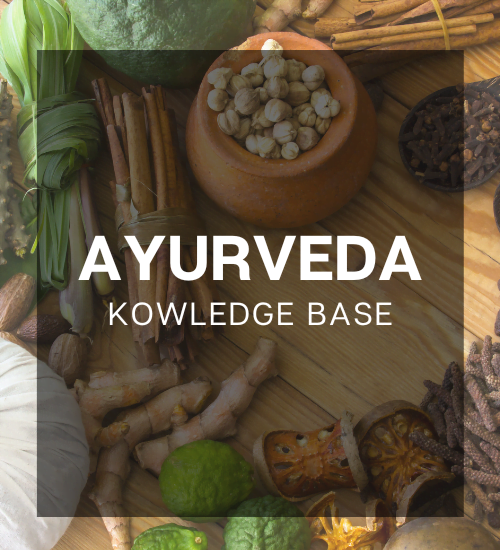No products in the cart.
Swasa (Breathing Disorders)
Table of Contents

Swasa –forceful breathing pattern which is coined as the vata moves in upward direction as if air is blown out of a leather bag.
Types:
Maha swasa, urdhwa swasa, china swasa, tamaka swasa, kshudra swasa.
Factors which provoke vata which in-turn provokes pranavaha srotas which includes- exposure to wind & dust, drinking too cold water, exposure to too cold for long time, excessive physical activity, prolonged fastings, weakness due to any reason, excess intake of dry, hard, & cold potency drug., aggravates vata causes obstruction of pranavaha srotas leads to the disease.
Also factors which causes increase in kapha dosha in the body due to excess intake of heavy foods like blackgram,sesame oil, nuts etc,., frequent and excess intake of sea foods, consumption of curd,milk which contains heavy fats, foods which are too oily,sticky obstructs the channels of pranavata causes the diasease swasa.
The disease may also be caused as secondary to other diseases like kshaya, grahani, raktapitta, chardi, pandu & visha rogas.
Admana(distension of abdomen), low back ache, pain in chest region, difficulty in respiration, loss of appetite, loss of sense of taste, headache.
Sympoms of each type:
Complications: Patient may get collapsed or dies if not noticed within minutes to hours.
Fatal symptoms:
Breathlessness simultaneously included with fever, vomiting, thirst, diarrhea and edema are fatal symptoms.
Patya-apatya (Do’s & don’ts): Advice use of pepper powder instead of spice is advised. Semisolid diet cooked with easily digestible vegetables are advised. Early intake of food during night time is advised.
Regular intake of warm water is advised. Less intake of advised comparetivly to normal diet.
Apatya includes intake of cold, heavy foods, cold water, curd, excess intake of buttermilk, carbonated water or drinks, exposure to dust, pungent or strong odors, lying in flat position are strightly contra indicated.
Note: Seek Doctor’s advice for best results.
It is defined as a subjective experience of breathing discomfort that consists of qualitatively distinct sensation that vary in intensity. Also termed as distress or discomfort involved in breathing, air hunger.
Causes for dyspnea includes heavy physical exertion, pneumonia, cardiac ischemia, interstitial lung disease, congestive heart failure, chronic obstructive pulmonary disease, anxiety, pulmonary embolism, anemia.
It is an important symptom in many of the diseases hence the root cause is to be elicted.
Treatment includes- palliative management and physiotherapy of which chest. physiotherapy plays a major role.
Inflammation and narrowing of the small airways in the lungs cause asthma symptoms which can be any combination of cough, wheeze, shortness of breath and chest tightness.
Symptoms include recurring episodes of wheezing, coughing, chest tightness, shortness of breath.
Complications include GERD, sinusitis, obstructive sleep apnea.
Casuative factors include both genetic and environmental factors may includes pollution, smoking habit or inhalation of strong odors and allergens.
Symptomatic and palliative management to be done. Bronchodilators are recommended for short term relief of symptoms.
Types:
Maha swasa, urdhwa swasa, china swasa, tamaka swasa, kshudra swasa.
Nidana & samprapthi #
(causative factors & pathogensis):Factors which provoke vata which in-turn provokes pranavaha srotas which includes- exposure to wind & dust, drinking too cold water, exposure to too cold for long time, excessive physical activity, prolonged fastings, weakness due to any reason, excess intake of dry, hard, & cold potency drug., aggravates vata causes obstruction of pranavaha srotas leads to the disease.
Also factors which causes increase in kapha dosha in the body due to excess intake of heavy foods like blackgram,sesame oil, nuts etc,., frequent and excess intake of sea foods, consumption of curd,milk which contains heavy fats, foods which are too oily,sticky obstructs the channels of pranavata causes the diasease swasa.
The disease may also be caused as secondary to other diseases like kshaya, grahani, raktapitta, chardi, pandu & visha rogas.
Poorvaroopa #
(prodromal symptoms):Admana(distension of abdomen), low back ache, pain in chest region, difficulty in respiration, loss of appetite, loss of sense of taste, headache.
Sympoms of each type:
Kshudra swasa: #
This is the mild type of swasa, which is caused due to exertion or excess intake of food at once. This type of cough usually relieves by rest & does not last for a longer duration.Tamaka swasa: #
so named because it produces darkness infront of eyes.the symptoms are seen in head & neck region includes- cough and rhinitis in the beginning, snoring sound in throat, breathlessness fells like dying during an acute attack, there will be temporary relief after the expectoration with great difficulty, unable to lie down , sitting in forward position gives relief, forehead sweating, un-easiness, swelling of eyes, semi consciousness, frequent dry cough, wheezing ,nausea, get relieved with intake of hot water or fomentation.Maha swasa: #
patient look serious & grievous, expiration is prolonged and noisy, snorts and shakes like a overpowered bull, voice become weak and eyes become unsteady,dryness in throat, palpitations, retension of urine and feces observed, earache, headache, swelling of eyes, frequent fainting and unconsciousness are present.Chinna swasa: #
breathing in irregular pattern i.e,. fast,slow,stops in between, stabbing pain in chest region, gaseous distension in abdomen, burning sense in urinary bladder with retension of urine, redness and irritability in eyes, looks pale and becomes unconscious are present.Urdhwa swasa: #
Difficulty in inspiration with prolonged expiration, uprolling of eye balls, drowsiness, dryness of mouth with low pitched voice, pain in chest regions, unconsciousness are present.Complications: Patient may get collapsed or dies if not noticed within minutes to hours.
Fatal symptoms:
Breathlessness simultaneously included with fever, vomiting, thirst, diarrhea and edema are fatal symptoms.
Line of treatment: #
Snehana-swedana-vamana-langhanaPatya-apatya (Do’s & don’ts): Advice use of pepper powder instead of spice is advised. Semisolid diet cooked with easily digestible vegetables are advised. Early intake of food during night time is advised.
Regular intake of warm water is advised. Less intake of advised comparetivly to normal diet.
Apatya includes intake of cold, heavy foods, cold water, curd, excess intake of buttermilk, carbonated water or drinks, exposure to dust, pungent or strong odors, lying in flat position are strightly contra indicated.
Medicines: #
yastimadhu churnam, sitopaladi churnam, dasamoolaharitaki lehyam, vasakantakari lehyam, agastyaharitaki lehyam, mrutyunjaya ras, vyoshadi guggulu.Note: Seek Doctor’s advice for best results.
Modern view #
Dyspnea:Dyspnea is also known as shortness of breath is an uncomfortable of not being able to breathe well enough.It is defined as a subjective experience of breathing discomfort that consists of qualitatively distinct sensation that vary in intensity. Also termed as distress or discomfort involved in breathing, air hunger.
Causes for dyspnea includes heavy physical exertion, pneumonia, cardiac ischemia, interstitial lung disease, congestive heart failure, chronic obstructive pulmonary disease, anxiety, pulmonary embolism, anemia.
It is an important symptom in many of the diseases hence the root cause is to be elicted.
Treatment includes- palliative management and physiotherapy of which chest. physiotherapy plays a major role.
Asthma #
Asthma is a major non-communicable disease affecting both children and adults and is most common chronic disease in children now-a-days.it is a long term inflammatory disease of the airway of the lungs.Inflammation and narrowing of the small airways in the lungs cause asthma symptoms which can be any combination of cough, wheeze, shortness of breath and chest tightness.
Symptoms include recurring episodes of wheezing, coughing, chest tightness, shortness of breath.
Complications include GERD, sinusitis, obstructive sleep apnea.
Casuative factors include both genetic and environmental factors may includes pollution, smoking habit or inhalation of strong odors and allergens.
Symptomatic and palliative management to be done. Bronchodilators are recommended for short term relief of symptoms.
Updated on November 24, 2024
Powered by BetterDocs
 Doctor_Panel
Doctor_Panel






 INR
INR 



































